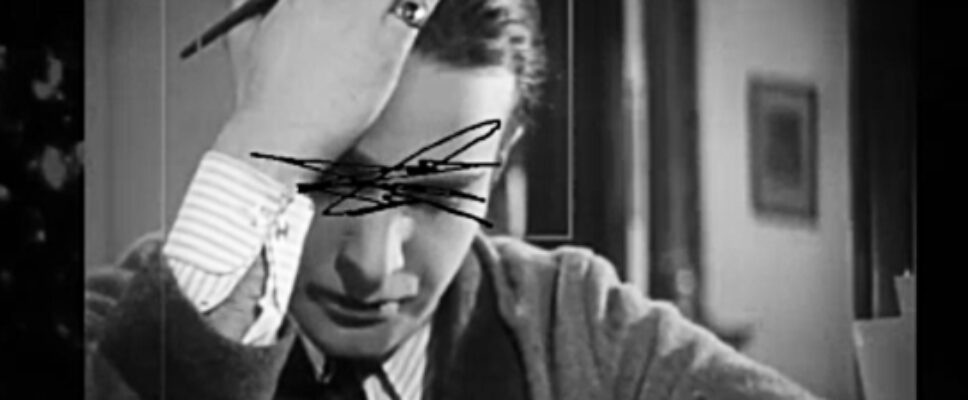Teresa reviews The Mysterious Affair at Styles (2022)
(Hungarian title: A Titokzatos Stylesi Eset)
Teresa reviews The Mysterious Affair at Styles (2022), a Hungarian version using images, movie clips, and a sole narrator to tell the story.
(c)2024 by Teresa Peschel
Fidelity to text: 4 poison bottles
 Considering what a bizarre, short, avant-garde film this is, it’s amazingly close.
Considering what a bizarre, short, avant-garde film this is, it’s amazingly close.
Quality of film: unratable poison bottles
 But only because I’d have to watch it three more times to judge fairly, and I don’t have the time.
But only because I’d have to watch it three more times to judge fairly, and I don’t have the time.
Read more of Teresa’s Agatha Christie movie reviews at Peschel Press.
Also, follow Teresa’s discussion of these movie on her podcast.

 I’m not sure what to say about this little wonder. Even more than Gumnaam (1965), the Bollywood version of And Then There Were None (1939), this film is its own, unique thing, complete and sufficient unto itself. In researching it online, words like avant-garde, machinima, database concept art, bricolage, film collage, and hallucinatory float by in vast word salads that don’t come together in any meaningful way for me, luddite clod that I am.
I’m not sure what to say about this little wonder. Even more than Gumnaam (1965), the Bollywood version of And Then There Were None (1939), this film is its own, unique thing, complete and sufficient unto itself. In researching it online, words like avant-garde, machinima, database concept art, bricolage, film collage, and hallucinatory float by in vast word salads that don’t come together in any meaningful way for me, luddite clod that I am.
But Titokzatos was fascinating, nonetheless, and not least because it compresses the entire story of Styles to 65 minutes. Yes, everything and everyone’s there except Hastings. Poirot tells us the story. The filmmaker didn’t make very many changes or mistakes from the original text, either. There are a few inconsistencies but that might have been errors in the subtitles. Poirot also, based on the closing credits, says a few lines of dialog from Agatha’s other novels, including And Then There Were None and Peril at End House.


These snippets, stills, and overlays don’t appear one at a time either. There can be as many as six or seven of them onscreen at the same time, dividing the screen into little boxes filled with action. Or they’ll be static in some boxes and moving in others. There’s little consistency in what Emily Cavendish Inglethorpe looks like, other than older than Mary Cavendish or Dorcas the maid. Alfred Inglethorpe has an impressive beard, separating him from the other men in the Styles household.
If you’ve seen David Bowie’s (1947-2016) 1990 video for Fame 90 you’ve got an idea of what you’re in for.
What unifies all those snips and clips is Poirot’s narration. His is the only voice you hear.
This sounds like it makes no sense at all, but it does make sense. If you speak Hungarian, it will make considerably more sense. It would also be easier to watch if those darned subtitles weren’t miniscule, forcing you to squint at the screen while the pictures above them leap about like they’re enduring strychnine spasms.

The film’s divided up into eight sections:
1. Enter Poirot: in which our hero gives us background about Styles.
2. Evil Approaching: Poirot relates John Cavendish’s tale of woe.
3. The Night of the Tragedy: Emily Cavendish Inglethorpe dies horribly.
4. Poirot at Work: Poirot considers what he’s been told.
5. The Possible Suspects: Poirot discusses the suspects and bystanders.
6. The Arrest: Alfred Inglethorpe is arrested, followed by John Cavendish.
7. The Missing Link: Poirot realizes the hidden connection between two people and discusses the lies he’s been told.
8. Poirot Concludes His Story: Poirot reveals the murderers, how they did it, and why.
Sixty-five minutes and virtually every character in the novel (except Hastings) gets name-checked. It’s all there, including a lucid discussion about how bromide tonics can be turned into strychnine poisoning and an added explanation of why and how Evelyn Howard and Alfred Inglethorpe met.
This is unique. If you choose to watch this — and you should and not just for completeness’ sake — go into it knowing you’ll need to watch it a minimum of twice.
The first time will give you an idea of what you’re in for. You’ll get the barrage of imagery and squint at the subtitles racing by and hear Poirot tell all.
The second time around will let you start understanding the imagery. There’s a lot of it. Sound effects too, amplifying or reinforcing Poirot’s narrative.
The third time, everything should come together in a cohesive whole. You know the story, you know what to expect, and you’ll see Agatha adapted as you’ve never seen before. And you’ll have seen a cinematic miracle: Styles, a classic golden-age English country house mystery, has become an avant-garde art house film.
And it works!


